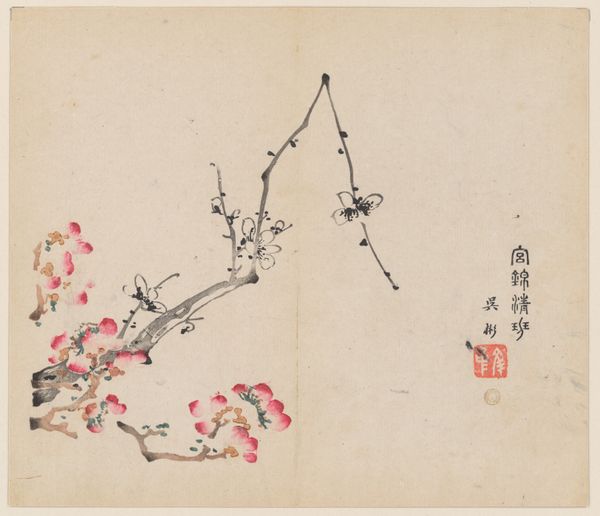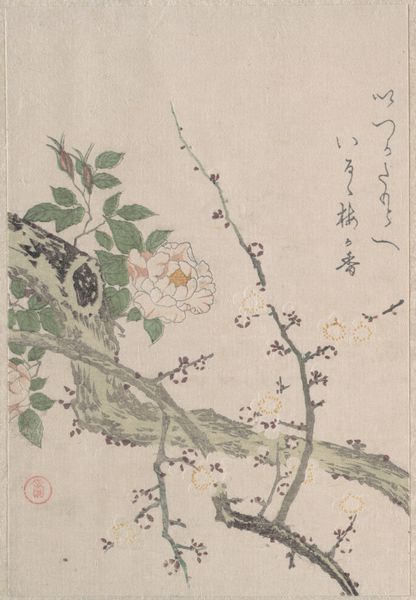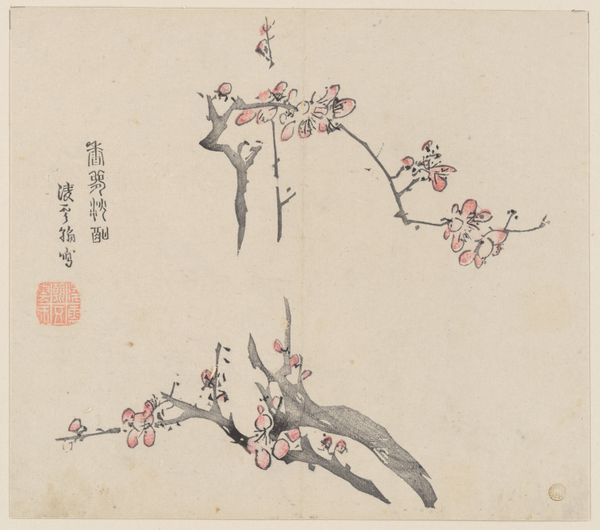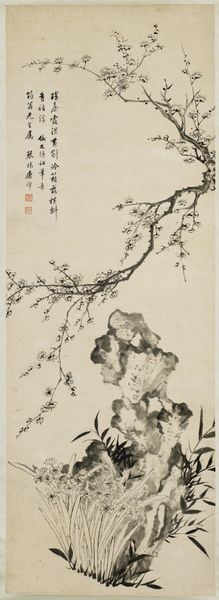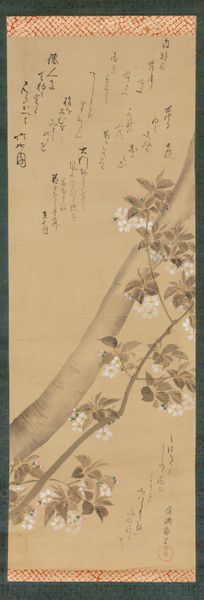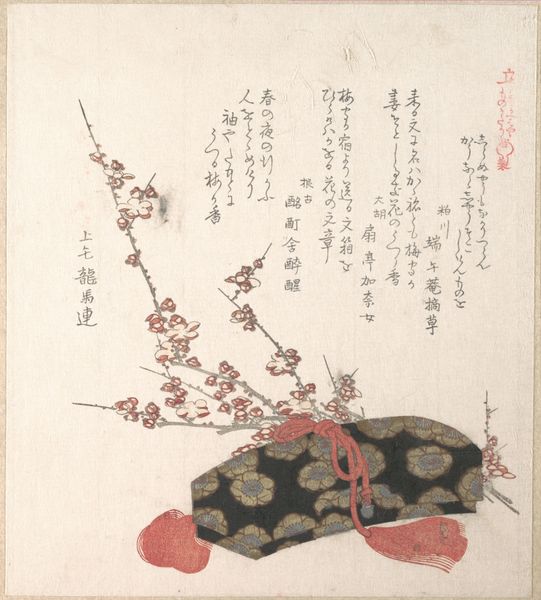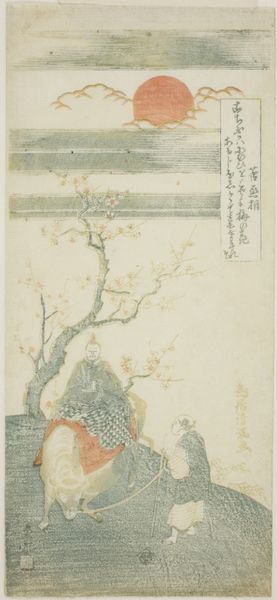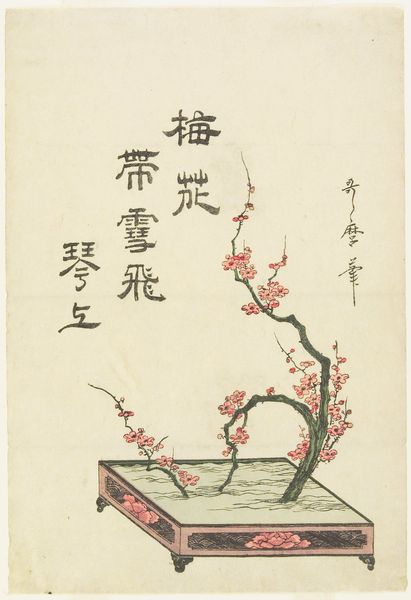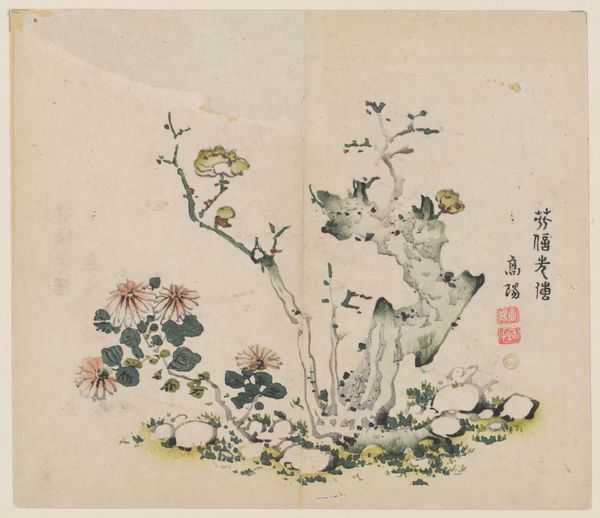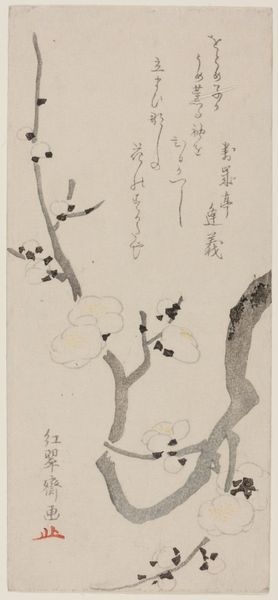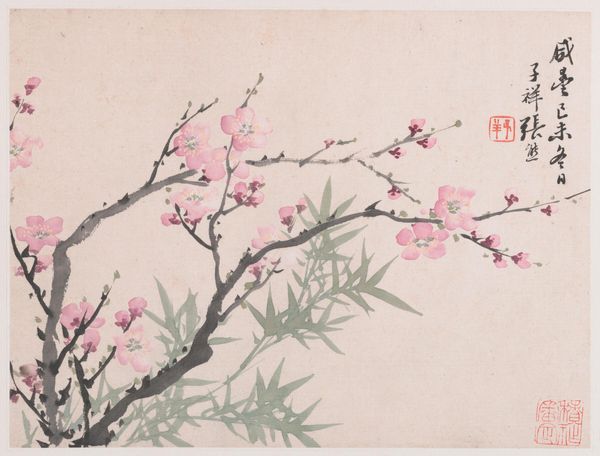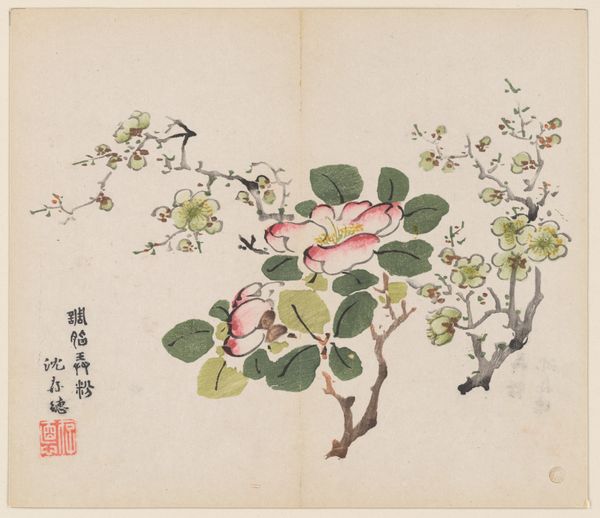
print, woodblock-print
# print
#
asian-art
#
landscape
#
ukiyo-e
#
figuration
#
coloured pencil
#
woodblock-print
#
orientalism
Dimensions: height 213 mm, width 186 mm
Copyright: Rijks Museum: Open Domain
Curator: It strikes me as quiet and contemplative, a feeling enhanced by the subtle colour palette. Editor: And here we have Teisai Hokuba's "Mount Fuji and a Blossoming Plum," a woodblock print from around 1825. What’s interesting to me is how seemingly simple materials can convey so much about both landscape and cultural symbolism. Curator: The paper itself looks quite thin, doesn't it? It seems the woodblock printing emphasizes the delicate plum blossoms against the backdrop of the iconic Mount Fuji. I imagine the process required very careful carving. Do we know what types of woods he would have used? Editor: Well, historically, cherry wood was quite popular due to its fine grain and durability. What fascinates me is thinking about the networks required to produce and distribute prints like these. The art markets that fueled the Ukiyo-e movement...it says a lot about the emerging middle class and its desires. Curator: Good point. It seems this piece represents the rise of urban culture in the Edo period, with these landscapes reflecting a yearning for the serene countryside and natural beauty...accessible art for the rising merchant class. I imagine the production was pretty streamlined. What do you think about the artist's intentional choice of capturing the blossoming plum, a sign of spring? I imagine that symbol had an impact on its reception and sales. Editor: Definitely. Think about the complex relationship between artist, publisher, and public. The publishers wielded considerable influence over artistic choices. Perhaps the subject of Mount Fuji offered something reliably recognizable. What do you think of its relationship to tradition, especially its position within established artistic schools of the era? Curator: I appreciate the tension between a growing demand for mass produced art and its inherent need to meet established conventions of landscapes from its cultural milieu, thus blending commercial appeal with artistic tradition, where artisans negotiate new ways to both express and provide access. I imagine Hokuba carefully sourced his dyes to guarantee they’d stay vivid over time? Editor: Indeed! Hokuba’s work here gives us insights into both the circulation of imagery and also what defined art’s public role in the period. It highlights the artist’s crucial position to embody tradition for a swiftly shifting landscape. Curator: Ultimately, both natural wonder and crafted materials give us tangible reminders about how society makes art possible, echoing through the passage of time. Editor: Yes, thinking about distribution of works, we find not just art, but also how institutions play into public consciousness. It really brings context into form, wouldn't you say?
Comments
No comments
Be the first to comment and join the conversation on the ultimate creative platform.
